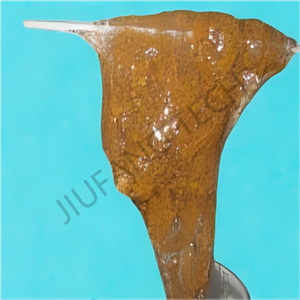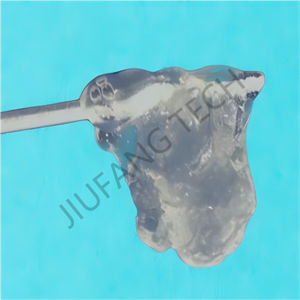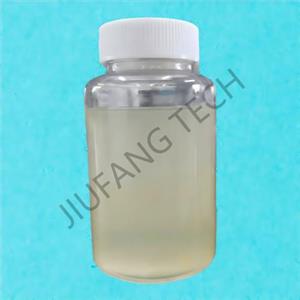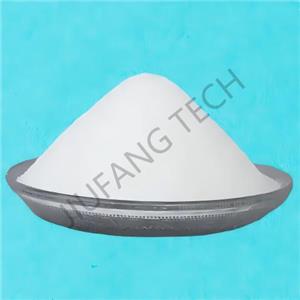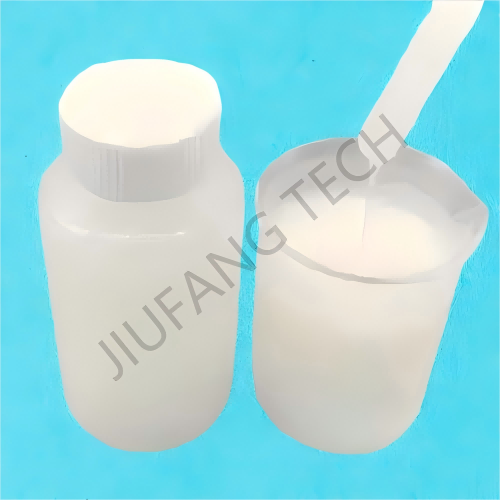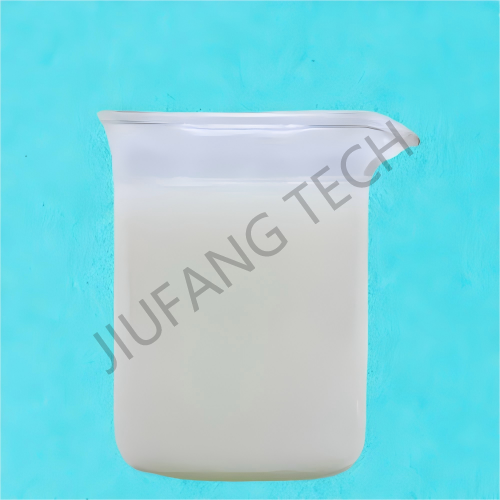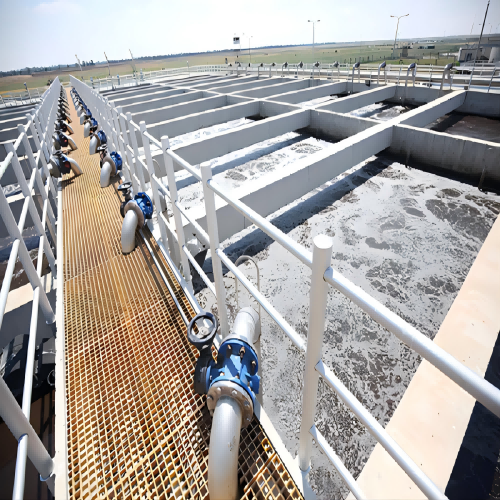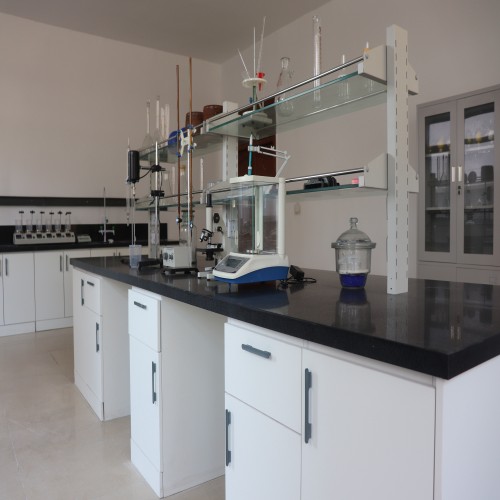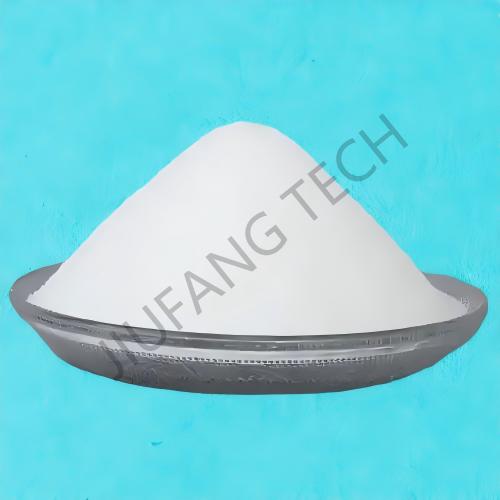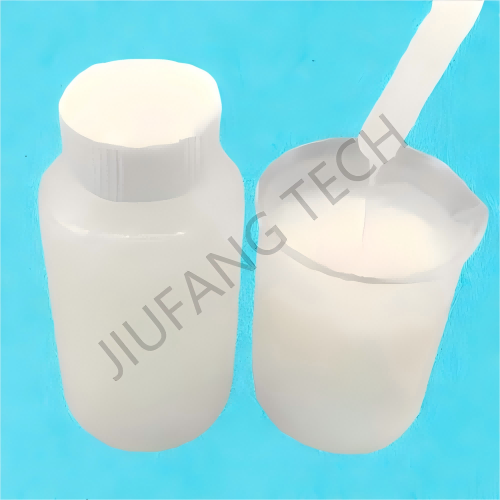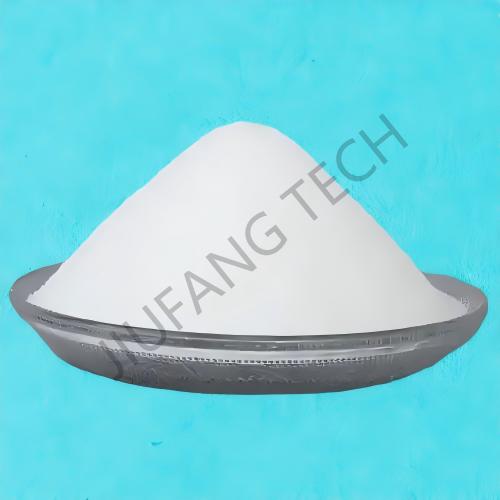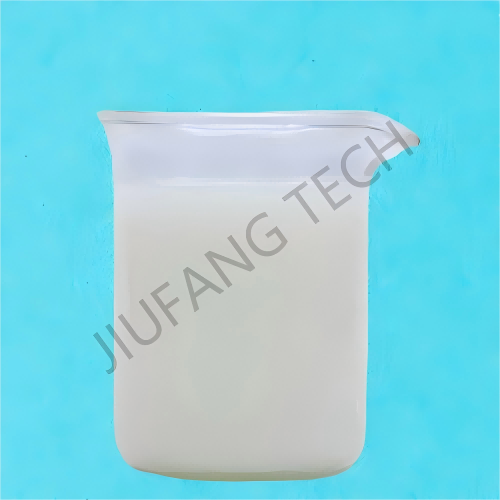
APAM Emulsion For Wastewater Pretreatment
Brand Jiufang
Product origin Shenyang
Delivery time Lead time: 7days
Supply capacity 2000Metric Tons per Month
1.Every month our factory could produce 2000tons emusion APAM wastewater.
2.APAM which is applied to the wastewater emulsion is a high molecular weight and high charge product.
3.Wastewater APAM emulsion can significantly flocculate in the pretreatment.
Download
As a highly efficient flocculant, anionic polyacrylamide emulsion has significant advantages over other types of wastewater emulsion (such as powdered PAM, inorganic flocculants, cationic/non - ionic PAM, natural polymer flocculants, etc.) in terms of performance, ease of use, and applicable scenarios. The details of polyacrylamide emulsion is as follows:
1. Compared with Powdered Polyacrylamide (PAM): Superior Dissolution Efficiency and Ease of Operation Powdered PAM (including anionic, cationic, and non - ionic) is a traditional solid-state flocculant. It requires long-term stirring for dissolution (usually 30-60 minutes) and is prone to caking and incomplete dissolution.
In contrast, anionic polyacrylamide emulsion is a liquid dispersion system with obvious advantages:
Rapid Dissolution: The polyacrylamide emulsion particles are already dispersed in water. It can be completely dissolved within 10-30 minutes after dilution without the need for long-term stirring. This is especially suitable for the continuous treatment of industrial wastewater (such as the printing and dyeing and papermaking wastewater from assembly - line production), reducing the waste of chemicals caused by incomplete dissolution and the decline in treatment efficiency.
No Dust Pollution: Powdered PAM is likely to generate dust during dissolution. Not only does it pollute the operating environment, but it may also be inhaled by operators (high-molecular-weight dust poses a health risk). The emulsion-type of polyacrylamide is in a liquid state, and there is no dust throughout the process, which meets the requirements of environmental protection and occupational health.
More Uniform Dispersion: If the powdered PAM is not properly dissolved, it is easy to form "fish - eyes" (undissolved particles), resulting in locally high concentrations and affecting the flocculation effect. After dilution, the anionic polyacrylamide emulsion can be uniformly dispersed in the wastewater, making more sufficient contact with pollutants and forming more stable flocs.
2. Compared with Inorganic Flocculants (such as PAC, PFS, Alum): Superior Flocculation Efficiency and Sludge Dewatering Performance Inorganic flocculants (such as polyaluminum chloride, polyferric sulfate, etc.) destabilize colloids through charge neutralization. However, when used alone, the flocs are small, the sedimentation is slow, and the dosage is large (usually tens to hundreds of mg/L). Compared with inorganic flocculants, anionic polyacrylamide emulsion:
Higher Flocculation Strength: The molecular chain of APAM wastewater agent is long (with a molecular weight usually ranging from 10 million to 20 million). APAM wastewater agent can connect the small particles formed by inorganic flocculants into large and compact flocs through the "bridging effect". The sedimentation speed is increased by 2-5 times, reducing the residence time in the sedimentation tank and increasing the treatment capacity.
More Economical Dosage: The effective ingredient utilization rate of anionic polyacrylamide emulsion is high. The optimal dosage is usually only 0.1-10mg/L, much lower than that of inorganic flocculants (saving 30%-50% of the chemical cost). When used in combination with inorganic flocculants ("inorganic coagulation + organic flocculation" combination), it can reduce the dosage of inorganic agents and the sludge production (excessive inorganic flocculants will lead to a sharp increase in sludge volume).
Adaptability to Complex Water Quality: Inorganic flocculants have limited treatment effects on wastewater with high turbidity and high organic matter content (such as the dye colloids in printing and dyeing wastewater). Anionic polyacrylamide emulsion can enhance the removal of complex pollutants by adsorbing organic molecules and entangling colloidal particles, especially suitable for the pretreatment of industrial wastewater (such as reducing COD and color).
3. Compared with Cationic/Non-ionic Polyacrylamide (CPAM/NPAM): Adaptation to Anionic Pollutants and Cost Advantages Cationic PAM (CPAM) and non-ionic PAM (NPAM) each have their applicable scenarios, but anionic polyacrylamide emulsion has more advantages in specific fields:
Targeted Adaptation to Anionic Pollutants: The anionic polyacrylamide emulsion molecular chain carries a negative charge (such as carboxyl groups). It has a stronger adsorption capacity for positively-charged colloids/particles in the wastewater (such as metal hydroxides in metallurgical wastewater, cationic dyes in printing and dyeing wastewater, and fiber debris in papermaking wastewater). It can quickly destabilize through charge attraction, and flocculation efficiency of polyacrylamide emulsion is better than that of CPAM (CPAM is more suitable for negatively - charged pollutants, such as municipal sludge) and NPAM (non - ionic type has weak charge - neutralizing ability).
Lower Cost: The production process of anionic PAM is relatively simple (introducing carboxyl groups through acrylamide copolymerization), and the price of polyacrylamide emulsion is usually lower than that of CPAM with the same molecular weight (CPAM requires the introduction of cationic groups, resulting in high raw material costs). Especially in large-scale industrial wastewater treatment (such as steel and chemical wastewater), it can significantly reduce the cost of chemicals.
4. Compared with Natural Polymer Flocculants (such as Starch, Chitosan): Superior Stability and Controllability of Effects Natural polymer flocculants (such as modified starch, chitosan) have good biocompatibility but have performance limitations.
The advantages of APAM wastewater agent is reflected in:
Stronger Chemical Stability: Natural flocculants are easily affected by temperature and pH (for example, starch is prone to gelatinization at high temperatures, and chitosan is easily degraded under acidic conditions). The molecular chain of APAM wastewater agent has better acid-base resistance and temperature resistance (suitable for pH 4-10, temperature 5-50℃), making it suitable for the complex working conditions of industrial wastewater (such as the high-temperature and acid - base fluctuations in chemical wastewater).
More Controllable Effects: The molecular weight and anionic degree (charge density) of APAM emulsion can be precisely regulated through the production process (such as adjusting the ratio of copolymerization monomers). It can customize its performance for different wastewaters (for example, high - molecular - weight APAM is selected for high - turbidity metallurgical wastewater, and medium - molecular - weight APAM is selected for low - turbidity printing and dyeing wastewater). However, the molecular weight and charge density of natural flocculants are limited by raw materials and modification processes, making it difficult to precisely adapt to complex water quality.
5. Compared with Other Liquid Flocculants (such as Polyferric Sulfate Emulsion, Liquid PAC): Superior Functional Specificity and Synergy Other liquid inorganic flocculants (such as liquid PAC) mainly rely on charge neutralization, while APAM wastewater agent, as an organic polymer, has more specific functions:
Strengthening Floc Structure: The flocs formed by inorganic liquid flocculants are relatively loose and easy to break (especially under water flow disturbance). APAM wastewater agent makes the flocs more compact and has stronger shear resistance through long - chain entanglement, facilitating subsequent sedimentation or flotation separation.
Adaptation to Advanced Treatment: In the advanced treatment of industrial wastewater (such as clarification before reuse), APAM wastewater agent can remove tiny colloids (particle size < 1μm) that cannot be treated by inorganic flocculants, reducing the effluent turbidity to less than 5NTU and meeting the reuse standards (such as the recycling of papermaking wastewater and the rinsing water for printing and dyeing wastewater).
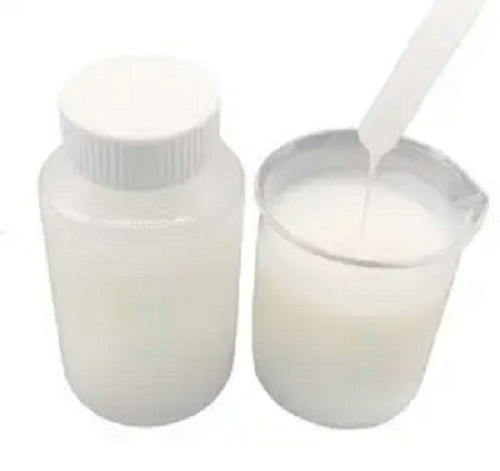
Industry-specific attributes
| Name | Wastewater APAM emulsion | |||
| Chemical Formula | (C3H5NO)n | |||
| CAS NO. | 9003-05-8 | |||
Other Attributes
| Appearance | Milky,White Viscous Emulsion | |||
| Activate Content | 40% | |||
| Molecular Weight10*6 | 15~18 | |||
| Specific Granvity(25℃) | 1.0 | |||
| Insoluble Substance(%) | 0.1 | |||
| PH Value | 6.5~7.5 | |||
| Dissolving Time,min | <30 | |||
| Anionic charge(%) | 30 | |||
| Storage Temperature,℃ | 0~35 | |||
| Shelf Life,month | 12 | |||
Supply Ability
| Supply Ability | 2000Metric Tons per Month | |||
Lead Time
| Quantity(kilograms) | 1~50 | >50 | |
| Lead Time(days) | 7 | negotiated | |

